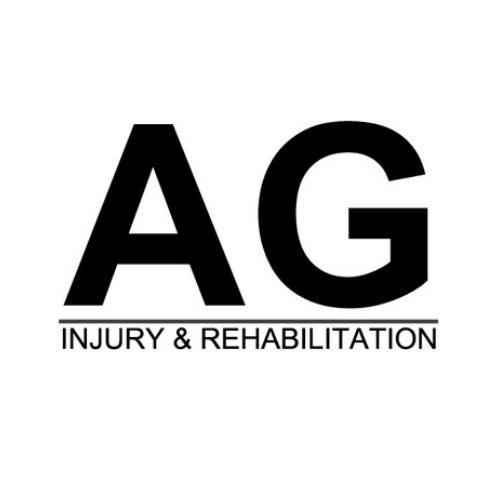Ever heard someone say they "slipped a disc" when they're suffering from traumatic back pain? It's a phrase that's become deeply embedded in our everyday language, yet it represents one of the most persistent myths in spine health. The reality is that spinal discs don't slip at all – they're firmly anchored between vertebrae by strong ligaments.
Think of your spinal disc like a jelly donut under pressure. When damaged, the inner gel-like substance can bulge or push through the tough outer layer, but the disc itself stays firmly in place. Understanding this distinction isn't just about semantics; it's crucial for proper diagnosis, treatment, and recovery.
The Myth of "Slipped Discs" and Why It's a Misnomer
Despite its common usage, the term "slipped disc" is medically incorrect. Spinal discs don't actually slip out of place - they're firmly attached to the vertebrae above and below by strong ligaments.
What really happens is that the disc's inner gel-like material (nucleus pulposus) pushes through the tough outer layer (annulus fibrosus). Medical professionals call this a herniated disc or bulging disc, depending on the extent of the damage.
The confusion often stems from the pain and symptoms that make it feel like something has slipped out of place. In reality, it's more like a jelly donut being squeezed too hard, causing the filling to push through the outer layer.
Basic Anatomy of the Spine and Intervertebral Discs
The spinal column contains 23 intervertebral discs, located between each pair of vertebrae from C2-C3 down to L5-S1. These discs make up about one-quarter of the spinal column's total height and act as natural shock absorbers.
Each disc has two main parts: a tough outer ring called the annulus fibrosus and a soft inner core known as the nucleus pulposus. The annulus fibrosus consists of several layers of collagen and proteins called lamellae, while the nucleus pulposus contains loose collagen fibers mixed with water and proteins.
This structure allows the discs to cushion impact and help the spine move smoothly during daily activities.
What Actually Happens When People Experience Disc-Related Back Pain
When a disc becomes damaged, the inner gel-like material pushes through cracks in the outer wall. This process occurs in stages, from a minor bulge to a complete herniation. The protruding disc material can press against nearby nerves or the spinal cord, causing pain and discomfort.
The pressure on nerve roots often leads to specific symptoms based on the affected area. For example, when a lower back disc presses on the sciatic nerve, patients may feel pain shooting down their leg. Similarly, a herniated disc in the neck might cause arm pain or tingling sensations.
The severity of symptoms typically depends on how much disc material has pushed through and which nerves are affected. Some people might experience mild discomfort, while others face intense pain that limits their daily activities.
Common Causes of Disc Herniation or Bulging
Disc problems rarely result from a single incident. Research shows that genetic factors account for about 70% of disc issues, making family history a significant risk factor. Age-related wear and tear also plays a major role, as discs naturally lose water content and flexibility over time.
Daily habits and lifestyle choices significantly affect disc health. Poor posture, repetitive lifting, and extended periods of sitting can maintain spinal health. Medical conditions like diabetes and high blood sugar levels may weaken disc tissue, while excess weight puts additional pressure on the spine.
Smoking also impacts disc health by reducing blood flow to spinal tissues and decreasing the discs' ability to absorb nutrients. This makes smokers more likely to experience disc-related problems than non-smokers.
Symptoms Associated with Disc-Related Back Pain
Pain from disc problems typically starts in a specific area of the spine and can spread to nearby regions. When a disc affects nerve roots, patients often feel sharp, burning sensations that travel along the path of the affected nerve.
Most people with disc problems report numbness or tingling in their arms or legs, depending on the location of the problem. This sensation, often called pins and needles, may come and go or remain constant. Some patients also notice muscle weakness, making it harder to lift objects or maintain balance.
The type and intensity of symptoms often point to the specific disc involved. For instance, a cervical disc problem might cause neck pain with numbness in the fingers, while a lumbar disc issue typically leads to lower back pain with leg symptoms.
Diagnostic Methods for Identifying Disc Issues
Medical professionals use several imaging techniques to pinpoint disc problems. MRI scans provide detailed pictures of soft tissues, showing exactly where disc material might press against nerves. CT scans offer cross-sectional views of the spine, while X-rays help identify decreased disc space between vertebrae.
Physical examinations play a key role in diagnosis. Doctors test muscle strength, reflexes, and sensation in specific areas. They may ask patients to perform simple movements to check range of motion and identify positions that trigger pain.
The combination of imaging results and physical findings helps doctors create targeted treatment plans. These tests also rule out other conditions that might cause similar symptoms, such as muscle strains or bone spurs.
Non-Surgical Treatment Options for Disc-Related Pain
Most disc problems improve with conservative care. Doctors often recommend short periods of rest combined with over-the-counter pain medications to reduce inflammation and discomfort. However, extended bed rest isn't helpful and may slow recovery.
Physical therapy stands out as a key treatment method. Therapists teach specific exercises to manage pain while supporting proper spine alignment. These movements help take pressure off affected discs while supporting proper spine alignment.
Additional options include ice or heat therapy, gentle stretching, and proper posture training. Some patients find relief through chiropractic treatments, though this should be discussed with a healthcare provider first. The goal is to manage pain while letting the body heal naturally.
When Surgery Might Be Necessary for Disc Problems
Surgery becomes an option when conservative treatments don't provide relief after several months. Doctors typically consider surgical intervention if patients experience persistent pain, significant weakness, or loss of bladder and bowel control.
The most common procedures include discectomy, where surgeons remove the protruding disc material, and laminectomy, which creates more space for compressed nerves. Some patients might need spinal fusion to add stability to the affected area.
While surgery can offer relief, it carries risks like infection, bleeding, and nerve damage. Success rates vary based on factors like overall health, age, and specific disc problems. Most doctors recommend trying all non-surgical options first, as many patients improve without surgery over time.
Prevention Strategies for Maintaining Spinal Health
Good posture forms the foundation of spinal health. When sitting, keep your feet flat on the floor and maintain a straight back. At work, position your computer screen at eye level and use a chair that supports your spine health.
Regular exercise strengthens the muscles that support your spine. Focus on low-impact activities like walking, swimming, or cycling. Core-strengthening exercises help protect your back during daily activities.
Proper nutrition and hydration keep spinal discs healthy. Drink plenty of water throughout the day, as discs need adequate hydration to maintain their shock-absorbing properties. A balanced diet rich in calcium, vitamin D, and protein supports bone and muscle health.
Avoid sudden twisting movements and heavy lifting without proper form. When lifting objects, bend at the knees and keep the item close to your body. Take regular breaks during extended periods of sitting to reduce pressure on your spinal discs.
The Importance of Proper Terminology in Understanding and Addressing Back Pain
Using correct medical terms helps patients better understand their condition and make informed decisions about treatment. The phrase "slipped disc" can mislead people into thinking their disc has moved out of place, when in fact, it remains firmly attached to the vertebrae.
Medical professionals use specific terms like debunking disc herniation myths to describe the actual condition. These terms paint a more accurate picture of what's happening inside the spine - the inner material pushing through or stretching the outer disc wall.
Clear communication between doctors and patients leads to better treatment outcomes. When patients understand their condition accurately, they're more likely to follow treatment plans and take appropriate steps for recovery. This knowledge also helps them ask informed questions during medical visits.
The Role of Physical Therapy in Managing Disc-Related Issues
Physical therapy offers specific techniques to help patients with disc problems. Therapists start with gentle movements and progress to targeted exercises as pain decreases. These methods include manual therapy, stretching, and strengthening routines that take pressure off affected discs.
Exercise programs focus on building core strength and improving flexibility. Patients learn proper body mechanics for daily activities, reducing the risk of further injury. Simple movements like cat-cow stretches and bird-dog exercises help stabilize the spine while promoting healing.
Therapists also teach patients how to maintain good posture during work and home activities. They might recommend modifications to workstations or sleeping positions. These practical tips, combined with regular exercise, often lead to significant pain reduction and improved function.
Long-Term Prognosis for People with Disc Herniation or Bulging
Many people with disc problems see significant improvement over time. Research shows that most herniated disc myths naturally shrink or heal within six months to a year, even without surgery. The body often reabsorbs the protruding disc material, leading to reduced pain and better function.
Treatment success rates vary based on several factors. Non-surgical approaches work well for 80-90% of patients, while surgical outcomes depend on the specific procedure and patient characteristics. Physical therapy combined with lifestyle changes shows particularly good results for long-term recovery.
Preventing future problems requires ongoing attention to spine health. Regular exercise, proper lifting techniques, and good posture habits help maintain improvements. Weight management and staying active play key roles in avoiding repeated disc issues. Many patients who follow these guidelines remain pain-free for years after recovery.
The Reality Behind Disc Problems and the Path Forward
Understanding that discs don't actually slip but rather herniate or bulge is more than just a matter of terminology – it's about empowering patients with accurate knowledge for better health outcomes. When we move past the misconception of "slipped discs," we can focus on evidence-based treatments and preventive measures that actually work.
Armed with proper understanding, patients can work more effectively with healthcare providers, follow appropriate treatment plans, and take proactive steps to maintain spinal health. Whether through conservative treatments or surgical intervention when necessary, the path to recovery becomes clearer when we start with accurate information.

